The content of the article:
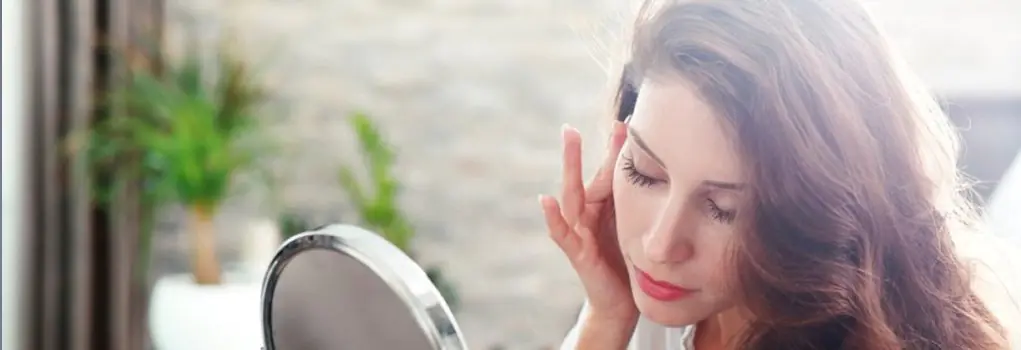
Types of acne under hair
Despite the abundance of reasons that cause the appearance of acne on the scalp, in essence they are divided into only two types - ordinary comedones and inflammatory rashes. Comedones are cysts that form when the mouths of hair follicles are blocked by a mixture of desquamated epithelium and sebum. Inflammatory acne is a red papule with a purulent tip. Such inflammations can itch and hurt; they are easily damaged when scratching, which leads to the spread of the infectious process. Their size can vary from one millimeter to one centimeter.
Causes of acne on the scalp
The appearance of acne on any part of the body indicates various problems with a person’s health, be it a man, woman, child or teenager. Getting rid of acne only with the help of cosmetics means driving the real problem deeper. Acne treatment should always be comprehensive and, first of all, aimed at eliminating the cause of the disease. All causes of rashes on the head can be divided into three main groups:
- unbalanced diet;
- incorrect selection of hair and scalp care products;
- medical and psychological disorders.
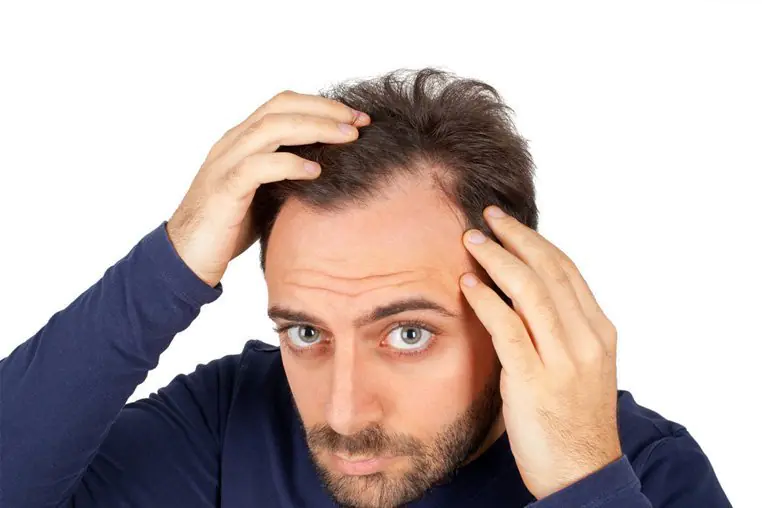
Men are more susceptible to acne on the scalp
Acne can break out due to the overuse of foods such as salt, pepper, sweet or fatty foods.
It is precisely this “gentleman's set” that is usually characterized by fast food, which men abuse much more often than the fair sex.
If you select the wrong hair care products, allergic reactions may occur. Using a shampoo that is not suitable for your skin type can lead to disturbances in the acid-base balance of the skin and hair, and the functioning of the sebaceous glands, which leads to a variety of negative consequences. In addition to acne, it can be dry and brittle hair or, conversely, increased oiliness, increased hair loss, dandruff, etc.
Abuse of hygiene procedures is also not recommended: washing your hair too often disrupts the natural protective properties of the skin, making it especially vulnerable to various pathogenic microorganisms. The same goes for frequent use of a hairdryer.
The group of medical problems that lead to the appearance of acne in general and on the head in particular is the most extensive. These include:
- hormonal disorders of an age-related nature in adolescents and cyclic disorders in women;
- polycystic ovary syndrome;
- disturbances in the gastrointestinal tract;
- dysfunction of the adrenal glands;
- bacterial and fungal infections;
- parasitic infestations;
- seborrhea;
- hyperkeratosis;
- hyperplasia of the sebaceous glands;
- taking hormonal drugs or barbiturates;
- diseases of the nervous system;
- prolonged stress.

Proper nutrition is an integral component of scalp treatment
Among other things, synthetic underwear, bad habits, hypothermia or overheating of the head, chlorinated water, and a lack of foods containing retinol and carotene in the diet can contribute to the appearance of acne.
Treatment of acne under hair
Before taking any independent action to eliminate acne on the head, it is necessary to establish the cause of its appearance. Only a specialist can do this. Therefore, first of all, you will need to consult a dermatologist. But, since the list of causes of acne is not limited to skin problems, you may need to consult other specialists: an endocrinologist, gynecologist, allergist, neurologist. It is possible that you will need to take a biochemical blood test and/or a blood test for hormones. Ultrasound is often used to diagnose internal organ problems that may lead to acne.
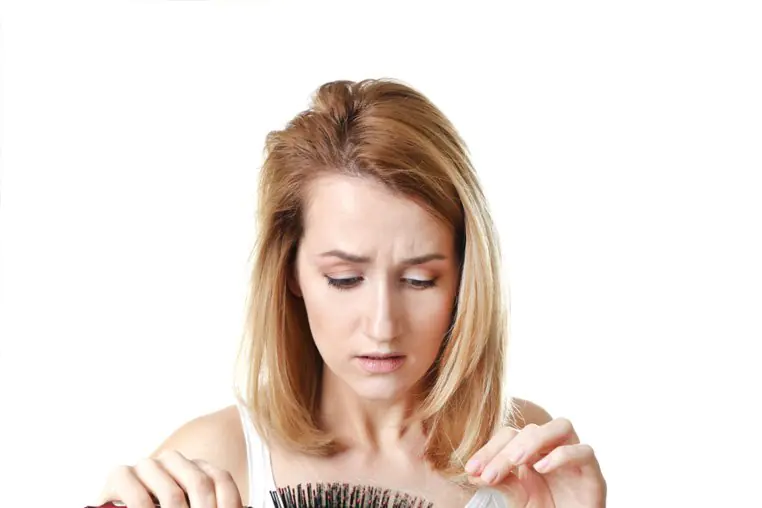
If hair loss is the result of acne on the head, it is not advisable to use regular strengthening shampoos.
Regardless of the underlying cause of the disease identified as a result of medical diagnosis, patients are advised to normalize their diet. You should limit your intake of salty, fatty and sweet foods, consume enough fiber and foods rich in vitamins, calcium, selenium and zinc, omega-3 saturated fatty acids, and avoid foods with preservatives.
Hair care products should be selected strictly according to the type of hair and scalp. Among the general recommendations used in the complex treatment of acne on the head are giving up bad habits and a healthy lifestyle - moderate physical activity in the fresh air.
As a measure to prevent relapses of inflammatory processes, it is recommended to strengthen the immune system with the help of specialized vitamin complexes.
First of all, acne treatment is aimed at eliminating the hyperfunction of the sebaceous glands. If it is caused by the activity of the Malassezia fungus, which normally lives on the skin without causing problems, antifungal therapy is used: selenium disulfide or lithium succinate in shampoos, ketoconazole in pharmaceutical preparations for oral administration.
If the cause of acne on the head is a bacterial infection (most often it is bacteria of the genus cocci or Propionibacterium acnes), antibiotics are prescribed. This may include amoxicillin, erythromycin, adifloxacin and benzoyl peroxide.
If the appearance of acne is caused by disturbances in the gastrointestinal tract, medications are prescribed to normalize the microflora, and enterosorbents are indicated to remove toxins and waste from the body.
If acne on the head is of allergic origin, antihistamines are used. If their appearance is associated with stress or disturbances in the functioning of the central nervous system, drugs are prescribed to strengthen the nervous system.
Hormonal medications can be prescribed to women if it is determined that the cause of their problem is a lack of estrogen. For external use, wiping with a solution of salicylic acid, fucorcin, camphor alcohol, ichthyol ointment, etc. is indicated.
Ultraviolet irradiation is useful for this problem. In the most severe cases, surgical intervention may be used, in which abscesses are opened and disinfected. Among the hardware methods for removing acne, galvanic cleaning and disincrustation using vacuum can be used.
The degree of discomfort when acne appears is largely related to its location. For example, pimples in the hair are not as noticeable to others as rashes on the face, but they cause a lot of unpleasant, painful sensations. After all, they are constantly touched when combing and washing your hair. And treating acne on the head is quite difficult - the hair makes it difficult to access the skin, quickly becomes greasy and dirty when using ointments and talkers. Before starting treatment, you need to figure out why acne appears on your head.
Causes of acne on the scalp
Even a dermatologist or trichologist will not immediately say why acne appeared; he needs to interview the patient and prescribe a series of tests. The most likely causes of this misfortune:
- disorders of the hormonal and endocrine systems, in particular adrenal dysfunction;
- Excessive sebum production due to hormonal imbalance, poor diet or hair and scalp care;
- infectious processes in the body, usually against the background of weakened immunity;
- frequent stress, nervous system disorders (failure of the adrenal glands is also possible due to nervous system);
- poor choice of hair care products;
- excessive sweating of the scalp, for example, due to the use of a pillow with synthetic filler or synthetic bedding;
- taking certain medications;
- inflammatory process with the formation of boils due to hypothermia.
The causes of acne under the hair on the head vary depending on the gender and age of the patient. In newborns and infants, rashes on the head usually refer to allergies to detergents, cosmetics, the material of a cap or pillowcase, foods in the diet of a nursing mother, formula milk, or complementary foods. In adolescence, the main reason is a hormonal surge. Pimples on the scalp and hair in men often appear if testosterone production is impaired. In women, this problem can signal polycystic ovary syndrome and accompany menstrual irregularities.
If you find acne on your scalp, try to remember if you have recently changed your shampoo and other hair cosmetics, or if you have used new dye. The appearance of acne on the scalp in the hair can be caused by infrequent or excessively frequent hair washing. Exposure to chlorinated water is also a provoking factor.
Types of acne on the head
Judging by the appearance and localization of acne, one can also guess what caused it. Small white pimples (closed comedones, millet) occur due to blockage of the sebaceous glands. This creates favorable conditions for the activation of pathogenic bacteria, and the inflammatory process develops. This problem is most typical for adolescents during the period of hormonal changes with hyperfunction of the sebaceous and sweat glands. In adults, white nodular rashes are the result of abuse of fatty foods and poor hygiene.
Blackheads, like millet, are comedones, but open ones. Contaminants accumulate in the upper part of the pores, oxidize upon contact with atmospheric oxygen, acquiring a black color. Black comedones look unpleasant, but are painless until the pores become infected. Pink and red pimples often appear against the background of metabolic disorders and digestive disorders. Their appearance is preceded by itching, followed by a feeling of tightness and pain. The pain intensifies as the rash matures and pustules develop.
Infection of the rash leads to the development of a purulent process, which can also be triggered by hormonal imbalance or steroid use. Painful pimples with a purulent head usually break out within 4-5 days, and there is a threat of infection spreading throughout the entire scalp. In addition to comedones and purulent pimples on the head, wen and dense nodules in the subcutaneous layer (dermis) may appear in the hair. They also become inflamed and painful. Most often, pimples form on the back of the head, on the forehead and neck near the border of hair growth, in places where they part.
An integrated approach to treatment
To cure any acne, you need to eliminate the cause of its appearance. It is recommended to begin treatment by giving up bad habits (smoking, alcohol abuse) and adjusting the diet. Skin problems are often associated with a deficiency of vitamins and minerals, addiction to fast food, fatty foods, sweets, and smoked meats. If a person leads a healthy lifestyle, eats rationally, but is bothered by acne on the scalp, it is necessary to exclude all external factors that could provoke them:
- use high-quality hypoallergenic hair cosmetics and styling products;
- refuse bed linen and hats made of synthetic fabrics;
- choose the optimal frequency of washing your hair;
- soften hard water for washing by boiling, freezing, adding soda or lemon juice.
If the reasons are underlying, you need to treat the underlying disease, undergo examination by an endocrinologist, gastroenterologist and follow their instructions, and adjust your hormonal levels. Pimples on the head in women's hair are a reason to visit a gynecologist. It is necessary to avoid stress, not to subject the nervous system to excessive stress, taking sedatives may be indicated.
It is worth strengthening your immune system and taking a course of vitamin therapy if indicated. Brewer's yeast helps improve skin health; many manufacturers enrich it with microelements. For digestive problems, preparations with lactobacilli and other probiotics have a good effect. If acne on the back of the head, forehead, temples appears due to intoxication of the body, the doctor may prescribe Polysorb, Enterosgel and other adsorbents. For rashes of an allergic nature, desensitizing therapy is carried out and antihistamines are prescribed.
If purulent inflammation of the scalp has spread widely and deeply, a course of antibiotic therapy may be required to prevent sepsis (blood poisoning).
In parallel with lifestyle correction and systemic treatment, a course of local therapy is required. Topical ointments, gels, and lozenges not only relieve symptoms, but often target the cause of acne. There are many remedies for drying out acne, relieving itching, and inflammation. It is better to select them on the recommendation of the attending dermatologist, who takes into account the type of skin, the nature of the rash, and the complex of symptoms.
Local treatment
The composition of drugs used to treat skin with acne may include:
- antiseptics;
- for purulent processes - antibiotics;
- retinoids – derivatives of vitamin A;
- anti-inflammatory drugs.
Usually, drugs with a complex effect are used that disinfect the skin, reduce the activity of the sebaceous glands and cleanse the pores, dry it, and relieve itching. Pharmacy medications include:
- ointments - ichthyol, sulfur, zinc, Vishnevsky ointment, Levomikol;
- suspensions – Tsindol and mash, prepared according to a dermatologist’s prescription;
- salicylic, boric alcohol, alcohol tincture of calendula, hydrogen peroxide;
- tar soap and medicated shampoos.
Most acne medications dry out the skin very much, so they should not be used too often and you should simultaneously use moisturizing cosmetics and make nourishing masks.
Folk recipes
Here are some tips on how to treat acne using traditional methods:
- rinse your hair and scalp with infusions of medicinal antiseptic herbs (prepared at the rate of 5 tablespoons per liter of water). Yarrow, sage, string, and herbal preparations are suitable for these purposes;
- make masks from aloe juice, crushed anise seeds, pre-soaked in warm water, a mixture of olive oil with lemon juice, honey with cinnamon, grated pumpkin;
- use homemade shampoos from eggs and colorless henna, infusion of soap nuts. It is useful to enrich homemade and ready-made shampoos with tea tree oil;
- moisten pimples with a concentrated solution of sea salt, infusion or fresh juice of celandine, or a decoction of hop cones.
Traditional medicine recipes are quite effective, but only for uncomplicated disease. If such treatment does not have an effect, a visit to a dermatologist and drug therapy cannot be avoided.
Physiotherapeutic procedures
Treatment will be more effective if drug therapy is supplemented with physical therapy. For acne on the head the following are indicated:
- ultraviolet irradiation – disinfects and relieves inflammation;
- Ultrasound vibration therapy – stimulates local metabolic processes, destroys infection;
- darsonvalization - effective for hyperactivity of the sebaceous glands, enlarged pores, stimulates blood circulation and regeneration processes;
- laser therapy – destroys pathogenic microorganisms and helps cleanse pores;
- cryotherapy (cold treatment) – stimulates local immunity, blood supply to the skin, effectively disinfects and relieves inflammation.
- Vacuum disincrustation – destroys the pimple core.
Preventing acne on the head
If acne appears on the head under the hair, it will take a long time to treat it; the procedures will require a lot of time and effort. So it’s better to try to prevent the problem. Preventive measures include:
- rational nutrition, limiting the consumption of fats, harmful carbohydrates, a minimum of preservatives in the diet;
- healthy lifestyle without bad habits;
- compliance with personal hygiene rules, proper care of hair and scalp;
- using suitable hair cosmetics;
- prevention of stress, proper rest;
- regular examination by doctors;
- strengthening the immune system.
Often, a single pimple begins a large-scale inflammatory process that covers the entire scalp. So pimples and the skin around them must be promptly treated with disinfectant compounds, and under no circumstances should they be squeezed out, so as not to spread the infection.
Amina Pirmanova / article author
Any rash on the skin is a signal from the body that something has gone wrong somewhere. This kind of inflammation is always painful, especially if acne appears on the head. In men, due to short haircuts, rashes immediately catch the eye. But women, having discovered acne on their heads, should not take it lightly. After reading the article with photos, you will learn what types of skin rashes there are, why they appear, and how you can cure them.
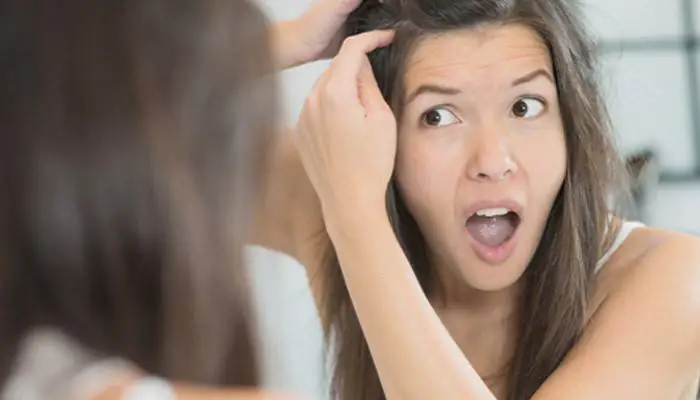
Why do acne appear on the head?
Bacteria that manage to overcome the hydrolipid film, which is one of the layers of the skin and performs a protective function, penetrate into deeper layers and cause inflammation, which manifests itself as acne. The painful discomfort that accompanies even the smallest pimple intensifies when combing your hair. Before you start fighting inflammation on the skin, you need to understand the reasons for their occurrence. They can be very diverse, both internal and external. For convenience, the main causes of acne on the head are divided into several categories.
In adults
- Unstable hormonal levels provoke skin rashes in women, this happens especially often when the menstrual cycle is disrupted.
- A more global cause of female rashes in the form of acne on the head can be polycystic ovary syndrome: when the organ works in an enhanced mode, the oiliness of the skin increases.
- In men, acne on the scalp appears when testosterone levels, a sex hormone, change.
- Frequently occurring stressful situations lead to problems with the adrenal glands, then a failure in the body’s well-functioning system results in acne rashes on the skin in the hair area.
- Taking some medications can cause a reaction in the body in the form of a skin rash.
- With colds and hypothermia, purulent pimples and boils may appear throughout the body, including on the head.
- The simple reason for the appearance of acne on the scalp may be trivial, hidden in the wrong choice of shampoo, the composition of which has an individual intolerance.
- Low-quality, highly chlorinated water dries out the skin, the sebaceous glands begin to work hard, and pustular rashes appear in the scalp.
- Using synthetic pillows for night rest. The scalp does not breathe, sweats, inflammation and acne form.
- Very frequent or, conversely, rare washing of the hair.
In children
Young children also suffer from the rash, although most are kept in ideal, clean conditions. In newborn babies, the cause of acne can be the incorrect diet of a nursing mother. Older children, preschool or primary school age, suffer from allergies to certain foods or even toys if they are made from low-quality materials. Parents need to pay very close attention to any changes in the surface of the child’s skin, especially when it comes to rashes in infants.
During adolescence
In girls and boys who have reached adolescence, the appearance of acne is the main problem that is visible to the naked eye. Hormonal surges cause rashes on the face, temples, and back of the head, accompanied by itching and increased sensitivity. Increased work of the sebaceous glands clogs the space near the hair follicles, causing inflammation. As a result, red or purulent pimples appear.
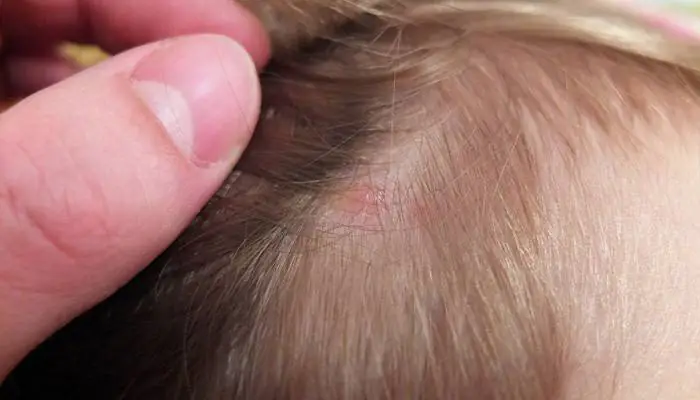
The main types of acne and the reasons for their manifestation
Any person, regardless of age, encounters trouble in the form of rashes. Pimples on the head, different in appearance, have their own distinctive features, which are worth dwelling on in a little more detail. At the first sign that any acne has appeared on your head, you need to pay attention to it and prevent the rash from spreading or worsening.
White pimples
Small white bumps on the skin that resemble small grains are located under the top layer of the skin. Closed comedones, or popularly called “comedos,” occur when the sebaceous glands are blocked by keratinized skin particles secreted by fat and sweat. Under the created plug, bacteria begin to actively multiply, creating a white nodule. This phenomenon of rash often occurs in adolescents, but even in adulthood, it is possible to encounter lumps on the skin that can periodically itch.
Red pimples
When small red spots appear on the skin, it is rarely a cause for concern. Inflammation develops in waves, sometimes intensifying, sometimes subsiding. During an exacerbation, a white purulent tubercle with a thickening under the skin appears in the center of the red pimple papule. Improper metabolism of the body and diseases of the gastrointestinal tract are the main reasons for the appearance of red pimples.
Blackheads
An open comedon has a black head, its structure and reason for its appearance is very similar to a white pimple, but is located in the upper part of the pore. Clogged with a layer of released fat, epithelial remnants, the pore or hair follicle is filled with a white-yellow substance, which, when oxidized under the influence of oxygen, darkens and becomes a black dot. As long as the area with blackheads does not become infected, they do not cause any trouble other than their unsightly appearance.
Purulent rashes
Rashes containing pus always not only look unpleasant, but are also very painful. Deep pimples may have a dense cystic base, then the color has a bluish tint. Red pustules contain a purulent ball inside. The cause of purulent rashes is the use of steroids, hormonal imbalance, or an infection that has entered the pores of the skin. Only a qualified physician after an examination can determine the source of the problem.
Subcutaneous painful nodules
The connective tissue (dermis), located between the hypodermis and epidermis, contains sweat and sebaceous glands, which, when clogged, form dense nodules that are painful to the touch. When bacteria enter the connective tissue, inflammation increases. The large size of pimples on the head indicates that the subcutaneous follicle has already burst and some amount has entered the dermis layer. If your scalp hurts on the top of your head, check to see if a new pimple has started to form there.
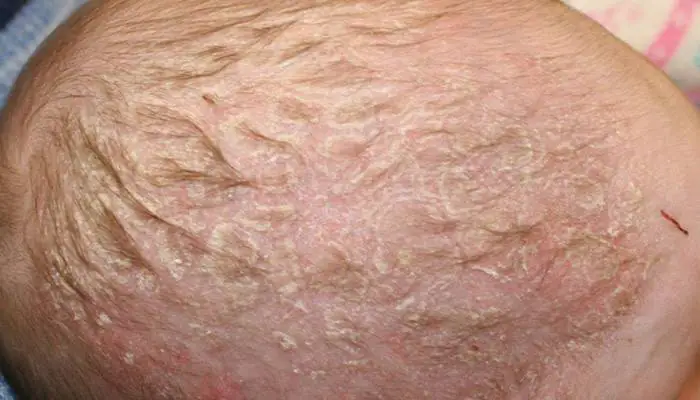
Which doctor should I contact?
When rashes on the scalp appear systematically and cause pain and discomfort, you should visit a professional dermatologist. After conducting the necessary laboratory tests, establishing the cause of the rash, inflammation on the head, the dermatologist prescribes treatment himself or advises seeking advice from an allergist, endocrinologist, therapist, or neurologist. Getting rid of the main cause of acne will speed up the results of properly prescribed treatment.
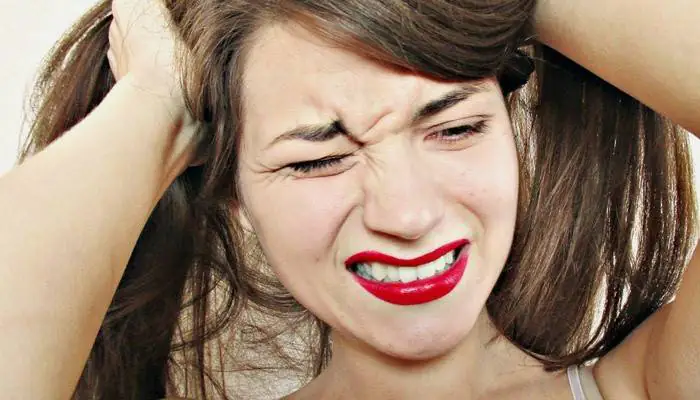
How to get rid of acne on the scalp
How to cure acne that periodically or constantly appears on the part of the head covered with hair can only be determined by a doctor who has a complete picture of the disease and knows the cause of the rash. Self-treatment can lead to worsening of the condition. Combining medication and physiotherapeutic methods gives positive results in the fight against inflammation. Longer treatment gives lasting results after recovery, but subject to the correct healthy diet and proper care for problem skin.
Drug treatment
Treatment with medications prescribed by a doctor against acne should be divided into several groups:
- Antiseptics. The most gentle effect on inflamed skin is antiseptic agents. The disinfecting effect of ointments, suspensions, and gels disinfects the top layer of skin, preventing the appearance of new rashes, thanks to zinc, which is part of some preparations. You need to apply directly to the pimples themselves and a small radius of the skin around them. The list of common drugs includes: “Ichthyol ointment”, “Tsindol”, “Metrogil”, “Kvotlan”, “Skinoren”, “Effezel”, “Aknebay”, calendula tincture.
- Adsorbents. The task of these drugs is to absorb all the toxins from the skin released by acne, start the body’s metabolism in an optimal mode, and regulate the functioning of the sebaceous glands. Doctors prescribe Polysorb, brewer's yeast, Laktofiltrum.
- Antibiotics. In more complex cases of skin inflammation, the doctor prescribes medications from the antibiotic group in the form of ointments for external targeted use, such as Levomekol for acne and oral tablets to enhance the radical effect. They also help: ointment “Tetracycline”, “Metacycline”, “Doxycycline”, “Zinerit”, “Baziron AS”, “Erythromycin”, “Clindamycin”, “Monocycline”.
Physiotherapeutic methods
To ensure that the focus of skin inflammation occurs in a comprehensive manner, physiotherapeutic procedures against rashes are prescribed. These include:
- Cryotherapy. Local use of low temperature with liquid nitrogen applied to areas of greater acne accumulation on the skin. Cold treatment helps stimulate blood vessels, improves blood circulation, and activates the immune system.
- Laser therapy. The mechanisms that provoke the occurrence of acne are blocked. When a laser beam hits a pimple, the cell is partially destroyed, the ducts of the sebaceous glands are released, and bacteria and fungi that cause inflammation are killed.
- Darsonvalization. With the help of the Darsonval apparatus, the work of the sebaceous glands is regulated, pores are narrowed, blood circulation is improved, skin cells are restored, and inflammation is relieved.
- Ultrasound vibration therapy. Improves metabolic processes at the skin cell level, blocks the proliferation of bacteria.
- Ultraviolet. Treatment of the scalp with ultraviolet rays dries inflamed areas of the skin and kills bacteria.
Folk remedies
Treatment of inflammation of the scalp using folk methods at home can achieve good positive results, but on condition that this is part of a comprehensive treatment. Any of the proposed folk remedies against inflammation of the scalp should be used only after consultation with a doctor. We present more popular and effective non-traditional methods of fighting acne at home:
- Apple vinegar. After washing your hair, mix apple cider vinegar and water in equal proportions and wet your scalp.
- Honey with cinnamon. Mix two tablespoons of honey with ground cinnamon 2:1. Apply the resulting mass to the hair and scalp, wrap in a warm towel for 20-30 minutes. Rinse with warm water.
- Tea tree oil. Being a good antiseptic, the oil will help get rid of acne under the hair if you add a little of it to your shampoo.
- Sea salt for acne. A warm, strong saline solution is applied with a swab to the inflamed areas of the skin.
- Pumpkin. Grate the vegetable until mushy. Apply to the head as a mask for 15-20 minutes. Accelerates the process of acne maturation and dries out inflammation.
- Hop. The hop cones are washed and boiled for 3-5 minutes. The broth is infused for about an hour, filtered, and moistened with pimples.
- Celandine. Pour three or four tablespoons of dry celandine into 0.5 liters of boiling water. After 2 hours, strain. Make lotions using a cotton swab. Freshly picked fresh celandine will cauterize the resulting pustular pimple with its juice.
- Plantain. Wash and mash plantain leaves. Distribute the pulp, along with the resulting juice, which has an antiseptic effect, over the surface of the head for 20-25 minutes. Rinse off with warm water.
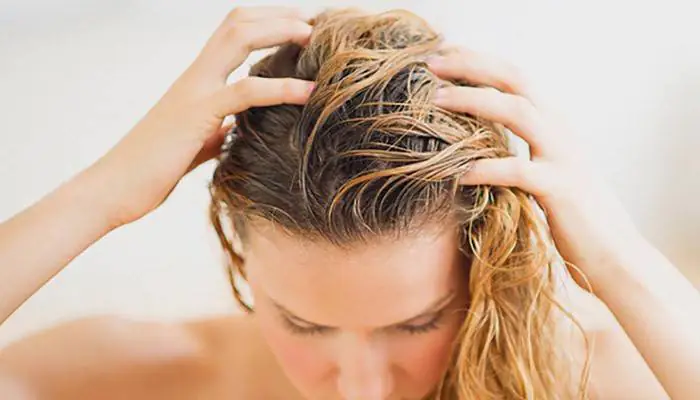
Prevention methods
Knowing the reason why acne occurs on the surface of the head, it is easier to prevent this unpleasant, painful phenomenon. The main axioms for those who suffer from skin inflammation should be:
- proper healthy eating;
- maintaining personal hygiene;
- timely disinfection and disinfection of skin areas at the first appearance of signs of small acne;
- selection of high-quality cosmetic products;
- a calm lifestyle without stressful situations;
- regular medical examinations by doctors.



